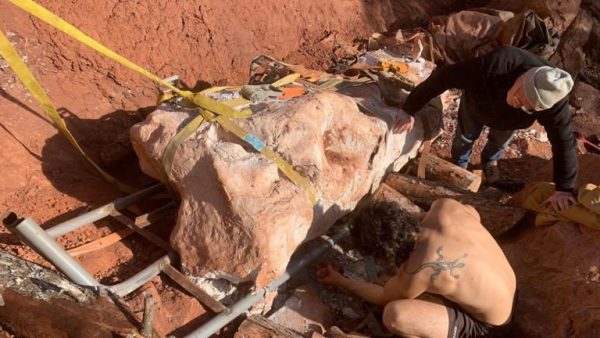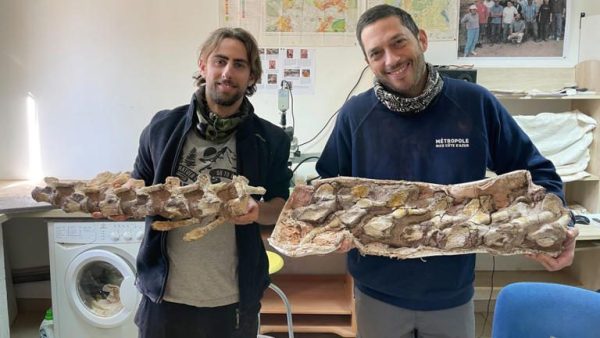The discovery of a nearly complete dinosaur skeleton in southern France has astonished researchers and enthusiasts alike, shedding light on a creature that roamed the Earth some 70 to 72 million years ago.

The massive fossil was unearthed in May 2022 by Damien Boschetto, a 25-year-old amateur paleontologist, and his dog while they were walking in a forest in Montpelier, France. Boschetto noticed a collapsed cliff edge and decided to investigate, leading to the discovery of a bone protruding from the ground.
The Archaeological and Paleontological Cultural Association at the Cruzy Museum, in collaboration with the French National Center for Scientific Research, identified the nearly 10-meter-long (32.8-foot-long) fossil as a Titanosaur skeleton upon excavation.

Boschetto, who has been a member of the association for eight years, expressed excitement over finding the bones in their almost original anatomical position, making this discovery extraordinary.
The Titanosaur skeleton, estimated to be around 70 to 72 million years old, was found intact, which is a rare occurrence in paleontology. Researchers believe that the body was buried before complete decomposition, leaving some tissues connecting the bones.

The Archaeological and Paleontological Cultural Association, formed in 1975 to safeguard the heritage around the village of Cruzy, has been excavating the site, referred to as a bone bed, for the past two years. The recently unveiled Titanosaur skeleton is among several fossils discovered at the site, including remains of other dinosaurs and vertebrates.
The completeness of the specimen will facilitate research to determine whether it represents a new species or a previously known one.

The region where Boschetto made the discovery is renowned for its rich fossil deposits, and the association aims to continue research in the area, hoping to establish a large-scale museum to accommodate and showcase these collections.





